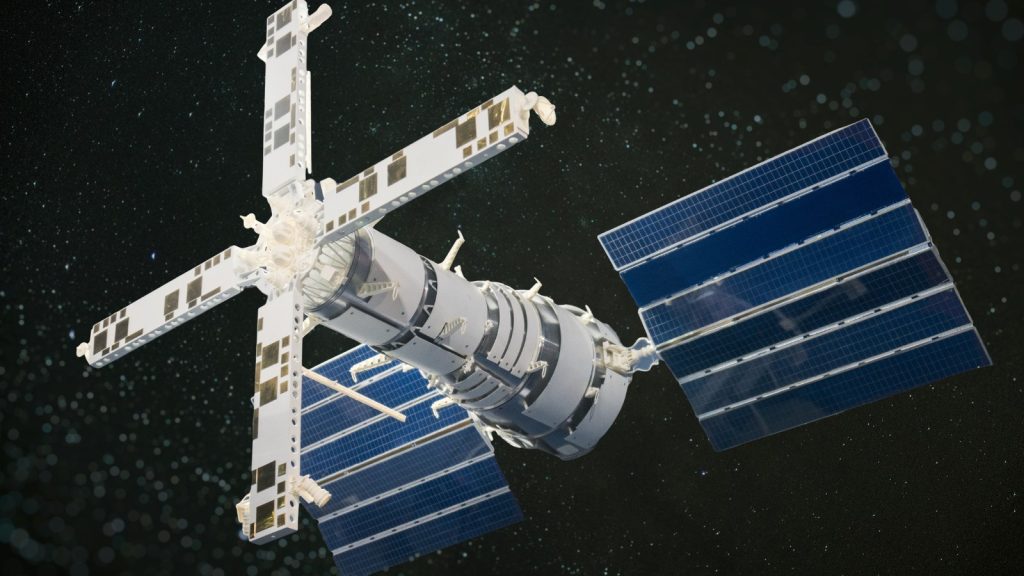Agriculture is the heart of a country’s economy, and it plays a very essential part in the list of industries that a country pays attention to. Australia is no exception when it comes to this aspect. They have identified the importance of having a full-scale agricultural background for a country to be stable in terms of economic growth. This is why Australia puts a lot of weight on extracting the best out of this particular industry. Collaborating with new technologies and inventing new agricultural methods receive the top spot on the list of triumphs they take to achieve this goal. ‘Global Navigation Satellite Systems’ or GNSS is one such specific technology that can be utilised in Australia’s agriculture due to its many benefits.
In this article, we will explore this GNSS technology and its benefits for agriculture and the Australian landscape.
What is GNSS?

- The latter is a network of satellites that provides geolocation and time information to users worldwide.
- If we look into its mechanism a bit, we can see it involves satellites orbiting Earth, continuously transmitting signals that are received and processed by GNSS receivers on the ground.
- GNSS’s usage is not limited to one industry. It finds applications in various industries such as agriculture, transportation, construction, and emergency services, enabling precise positioning, navigation, and timing.
- This is mostly employed in today’s world as it is highly integrated with other tools. As you can see, the latter easily integrates with technologies like Geographic Information Systems (GIS), the Internet of Things (IoT), and autonomous vehicles, enhancing its capabilities.
- However, what we witness is that this technology is gaining more and more popularity in today’s agricultural landscape. Do you know why? GNSS’s popularity stems from its versatility, offering accurate and real-time location services and increasing efficiency, safety, and productivity across sectors.
- This is mainly because challenges such as signal interference, multipath effects, and limited coverage in remote areas have limited agriculture’s full potential in the past. Now with this technology in hand, all of them are overcome through advancements in satellite technology and signal processing techniques, ensuring reliable and widespread GNSS usage.
The Top 5 Benefits of GNSS in Agriculture

Remote Monitoring and Control
Gone are the days when farmers faced challenges in monitoring remote fields and managing equipment due to location-based issues, which led to inefficiencies, delayed interventions, and increased costs.
The good thing is that GNSS technology addresses these challenges via its power to offer remote monitoring and control.
Let us explain how this occurs. GNSS-enabled remote sensing technologies allow farmers to monitor field conditions, equipment status, and crop health remotely, enabling proactive management and timely interventions. Then, as it can integrate GNSS with sensors and IoT devices, farmers receive real-time data on soil moisture levels, temperature, humidity, and crop health, regardless of their physical location.
No need to mention that this data empowers farmers to make informed decisions promptly, such as adjusting irrigation schedules, applying fertilisers, deploying pest control measures, optimising resource usage, and maximising yield.
Plus, GNSS allows machinery to be tracked, which facilitates maintenance schedules and ensures efficient use of equipment. As you can see, it helps the Australian agriculture field balance productivity, sustainability, and profitability while minimising manual labour and travel costs.
Improved Crop Quality
It was quite challenging for the farmers to handle low-quality crops due to various factors such as inadequate monitoring of crop health, inefficient resource allocation, and delayed interventions against diseases, pests, and nutrient deficiencies.
GNSS technology emerges as the best solution to improve crop quality by enabling real-time monitoring and intervention. GNSS enables farmers to monitor crop health and growth in real-time, allowing for timely interventions to prevent diseases, pests, and nutrient deficiencies, thereby improving crop quality.
Since it is possible to integrate GNSS with remote sensing technologies and agricultural drones, farmers gain access to high-resolution imagery and data on crop health indicators like chlorophyll levels, canopy temperature, and vegetation indices.
This allows for targeted actions such as the precision application of fertilisers and pesticides, irrigation management, and early detection of stress factors.
Reduced Environmental Impact
Agriculture is one specific industry that is interwoven with the environment. Harm to one ends up harming the other one as well.
In those days, farmers faced challenges with environmental breaches due to certain agricultural activities. This varied from excessive use of fertilisers and pesticides and improper irrigation practices to inefficient land management techniques and so on.
What we see is that these practices usually lead to chemical runoff into water bodies, soil erosion, increased greenhouse gas emissions, etc. The latter contributes to environmental degradation and biodiversity loss.
This is where GNSS technology emerged as the best solution to reduce environmental impact by enabling precision agriculture practices. By means of precision agriculture, it minimises the environmental impact of farming activities by reducing chemical runoff, soil erosion, and greenhouse gas emissions. On one hand, GNSS-enabled precision farming techniques allow for precise application of inputs such as fertilisers and pesticides based on real-time data on soil nutrient levels, moisture content, and crop health.
On the other hand, this targeted approach minimises the over-application of chemicals. Then it reduces the risk of runoff and contamination of water sources. Therefore, do you need any other justifications to prove that GNSS technology promotes sustainable agriculture practices?
Cost Savings
Nothing comes easy when it comes to production, no matter what industry it belongs to. Farmers encounter some challenging situations due to expensive machinery and unwanted expenses that are associated with inefficient resource utilisation, over-application of inputs, and manual labour costs.
Obviously, these factors contribute to high operational costs, reduced profitability, and financial strain on farmers. How can new technology like GNSS help ease this burden? It is surely interesting to explore.
As it can optimise inputs like seeds, fertilisers, and fuel usage, GNSS helps farmers reduce costs associated with unnecessary resource usage, leading to improved profitability. As we have mentioned above, GNSS-enabled precision agriculture techniques enable farmers to precisely apply inputs based on real-time data on soil conditions, crop health, and weather patterns.
This targeted approach minimises waste and overapplication, reducing input costs while maximising yield potential. Also, GNSS technology helps farmers achieve significant cost savings, improving financial sustainability and competitiveness in the agricultural industry, all while boosting efficiency.
Precision Farming
Yes, we mentioned this concept a few times before. You may wonder what this is.
Did you know that farmers in Australia faced difficulties due to the uneven distribution of inputs, inconsistent crop growth, and inefficient resource utilisation? This was a regular thing in agriculture. Precision farming was introduced to overcome such a burden through a technological approach. Let us show you how it works.
As the authorities identified, these challenges stem from the lack of accurate spatial information and the inability to tailor farming practices to specific field conditions. GNSS technology emerged as the best solution to offer precision farming by providing accurate location data and enabling the precise application of fertilisers, pesticides, and water.
GNSS helped precision agriculture techniques by providing accurate location data, allowing farmers to precisely apply fertilisers, pesticides, and water, reducing waste, and maximising yield, as we stated before. Since GNSS comes out with high integration powers, it easily couples with other technologies such as remote sensing and GIS.
This helped farmers create detailed field maps, analyse variability within fields, and develop customised management plans. This targeted approach ensures optimal resource allocation, minimises environmental impact, and enhances overall farm productivity.
Encouraging Agriculture via GNSS Tech

No matter what challenges you encounter during the agricultural processes in Australia, you can have faith in ‘GNSS technology’ for sure. However, you need to purchase these tools from a reputed supplier and check whether their features align with your industry-specific goals. With the right strategies, there will be fewer challenges.







